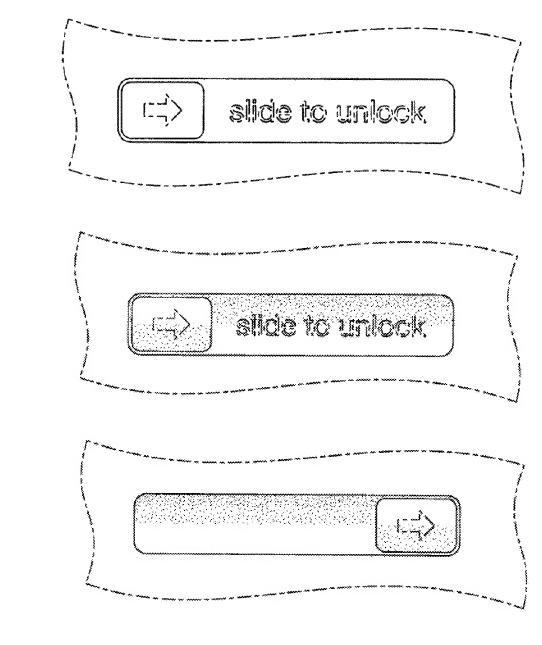Apple awarded design patents for slide-to-unlock and original iPhone design
The U.S. Patent and Trademark Office granted Apple patent numbers D675,639 and D675,612, respectively covering the much-disputed slide-to-unlock user interface asset and design for the original iPhone.
Apple's patent for a "Display screen or portion thereof with a graphical user interface" offers images specifically illustrating the rounded rectangular bar iPhone users have grown accustomed to seeing at the bottom of their lock screens. Drawings for the patent show the unlock slider in a series of largely similar configurations, with the last showing the slide bar all the way to the right in the unlock position.
Slide-to-unlock has been a hotly contested patent, with Apple claiming in German court that Samsung's Galaxy Nexus infringed on the property, only for a Google patent from 2010 to later emerge covering similar functions.
A continuation of Apple's slide-to-unlock patent was granted late last year, seemingly covering the open-to-app functions seen in Google's filing. Apple's application, though, was filed in August of 2011, while Google's was first filed for in August of 2010.
Apple itself has had troubles regarding slide-to-unlock, as Swedish company Neonode claimed last year that its own gesture unlock patent — used in a Windows CE handset — predated Apple's own filing. Neonode at the time expressed interest in entering licensing negotiations with Apple, though no further information on such negotiations, if they occurred, has emerged. Neonode's filing specifically states that graphical elements on screen do not move along with the unlock gesture, while Apple's filing specifically states that they do move.
The second design patent awarded on Tuesday covers the rounded-edge design of the original iPhone. The contours of the early versions of Apple's best-selling phone have also been the source of considerable legal struggle, making up a significant portion of Apple's landmark patent case against Samsung last year. With the Galaxy S III, Samsung eventually made a larger move away from Apple-like hardware designs, but representatives for the company said that move was part of a natural process and not the result of litigation from Apple.
 Kevin Bostic
Kevin Bostic












 Malcolm Owen
Malcolm Owen
 William Gallagher and Mike Wuerthele
William Gallagher and Mike Wuerthele
 Christine McKee
Christine McKee
 William Gallagher
William Gallagher

 Marko Zivkovic
Marko Zivkovic









